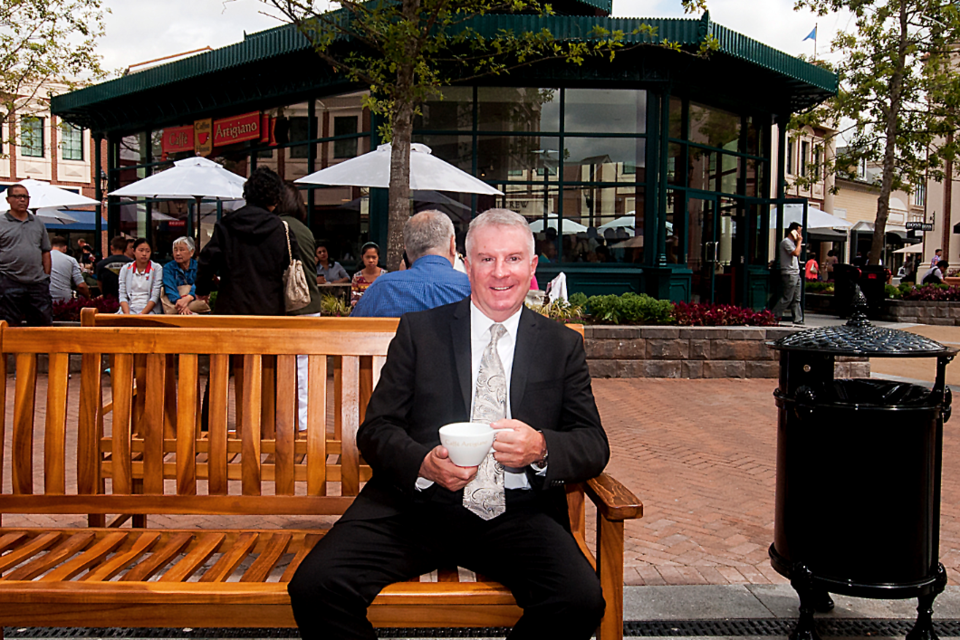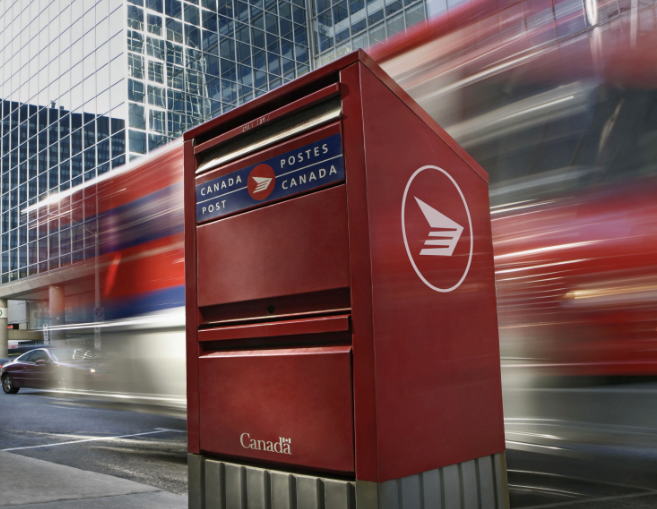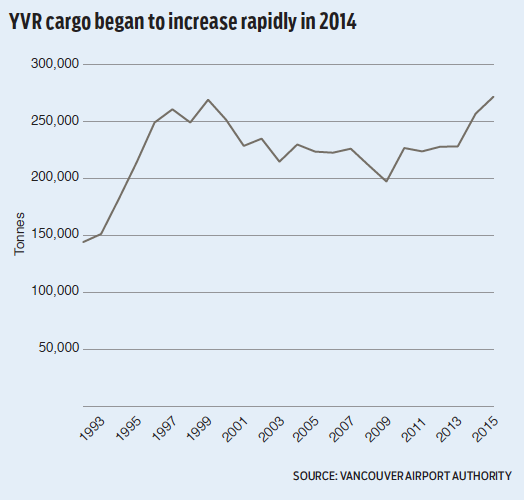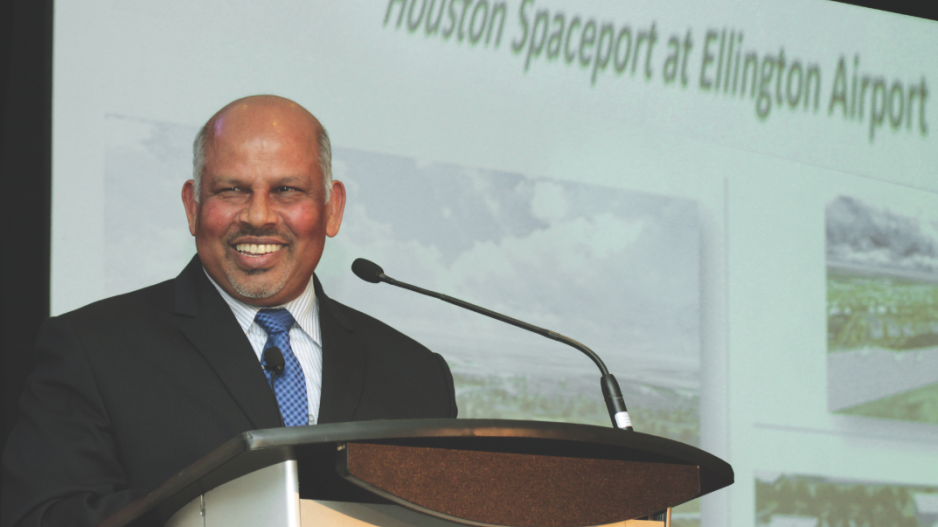Vancouver International Airport’s (YVR) importance as an economic hub increased last year when it processed record totals of passengers and cargo.
Steady growth has acted like a magnet, attracting companies to develop land near the airport and move operations closer to what is in the early stages of becoming an “aerotropolis.”
New York commercial artist Nicholas DeSantis first used that term in 1939 to refer to a metropolitan sub-region where the layout, infrastructure and economy are centred at an airport. Airport executives started commonly using the term in the last decade.
One Vancouver Airport Authority (VAA) strategy to develop the YVR aerotropolis includes expanding the airport’s terminal capacity.
Executives last year revealed four options to add 20 new terminal gates and enable the airport to process 25 million passengers annually by 2020. That’s about 25% more than the 20 million passengers who passed through the airport in 2015.
They have since chosen a preferred option and plan to make that choice public later this year or in 2017.
YVR’s aerotropolis would also gain maturity if VAA executives pulled the trigger on plans to develop a long-anticipated 32-acre business park.
VAA spokesman Chris Devauld told BIV June 14 that plans for the park are “on hold as we finalize our master plan process” and that more details are likely by early 2017.
Observers, however, believe that it is only a matter of time until the park is built given that it has been in planning stages for so long.
The VAA in 2011 described its vision for a $250 million office park south of the Templeton Canada Line station that would contain 800,000 square feet of office space and include 250 hotel rooms.
“The airport authority still has land on Sea Island that they could use for the park,” said Robert Thurlow, who is general manager of the 240,000-square-foot outlet mall on Sea Island that opened last July and was built by European mall operator McArthurGlen Group in partnership with the VAA.
“Any more development that goes on here would be great for us.”

(McArthurGlen outlet mall general manager Robert Thurlow said his mall's visitation is substantially higher than expected | Rob Kruyt)
Thurlow’s mall has attracted 4.2 million shoppers, about 30% more than projected, in its first 11 months.
Planning for the outlet centre’s 150,000-square-foot second phase is underway, and Thurlow said he should have a timeline for when that will open by September.
In the meantime, companies are leasing space and altering operations to capitalize on benefits of being close to YVR.
Gordon Food Service-owned Albion Fisheries on May 29 merged with sister company, and meat distributor, Intercity Packers to become Albion Farms and Fisheries.
The merger helps Albion increase capacity at its 65,000-square-foot facility in Richmond, where it moved a few years ago after leaving a site on Great Northern Way in Vancouver.
“Being close to the airport matters to us because we use a lot of air freight to get stuff overseas or even into the U.S.,” said Don Sollows, Albion’s vice-president of procurement and marketing.
“We also bring in a lot of products from various places by air. With the merger, we will increase the weight of product that we put through this building by about 60%.”
Albion won’t process meat at its No. 6 Road office but will warehouse, pack and distribute meat products as well as process seafood on the site.
The biggest recent arrival on Sea Island is Canada Post, which moved into custom-built digs in late 2014.

(Image: Canada Post trucks are parked at the Canada Post facility on Sea Island | Rob Kruyt)
The Crown corporation merged two facilities – its longtime B.C. headquarters in downtown Vancouver and a Richmond-based package-sorting facility – and opened a $200 million, 700,000-square-foot processing centre.
Executives said at the time that the rationale was largely based on the rise in e-commerce and more efficient delivery times that come as a result of being close to the airport.
Vancouver airport cargo hit a record in 2015
After being relatively flat for about a decade, cargo shipments through Vancouver International Airport started to gain altitude in 2014 and then hit an all-time high of 271,774 tonnes in 2015.

“Our hub strategy is just as important with cargo as it is for passengers,” said Vancouver Airport Authority spokesman Darren Hailes.
“For example, matsutake mushroom come in from northern B.C. in the morning and are on their way to Japan in the afternoon.”
Goods shipped through airports tend to have a higher value-to-weight ratio, according to the 2014 GWL Realty Advisors Air Cargo Supply Chains and the Changing Dynamics of Airports report.
Primary goods shipped via air include precious metals and stones, consumer electronics and luxury goods, the report noted.
Other smaller but rapidly growing product segments include pharmaceutical products and perishable foods, such as fruits, nuts, prepared grain products and animal fats, as well as seeds and natural oils.
Atlanta’s slow emergence into an ‘aerotropolis’ contrasts with Vancouver’s rapid rise
It might seem like a no-brainer that businesses near airports will receive and ship products faster.
But some major North American airports operate for decades next to a relative economic wasteland, far from businesses’ headquarters.
In Atlanta, for example, businesses for decades avoided locating near the Hartsfield-Jackson Atlanta International Airport, said Doug Hooker, executive director of the Atlanta Regional Commission, which includes 10 counties that surround the city.
This happened despite the airport becoming the world’s busiest for both passenger traffic and for airplane movements.
Georgian business leaders’ preference was to locate in more affluent areas in the metropolitan area’s predominantly white north end, which he said were presumed to be safer and more desirable for workers.
Representatives from different Atlanta counties started discussing how to create an “aerotropolis” about a decade ago, Hooker told Business in Vancouver June 14, after he gave a presentation in Richmond at the SMART Airports & Regions Conference for airport executives.
Momentum started to build five years ago, when Porsche decided to move its U.S. headquarters and about 450 employees from the city’s affluent north to a planned mixed-use area near the airport, known as Aerotropolis Atlanta.
Still, Hooker said, if people drive southwest from the airport, they will feel like they are “in the country because the environment is so natural, wooded and pristine.”
Clearly, locating an airport in a densely populated area can be difficult.
Part of the reason why airports can be located in low-density areas is because plane noise annoys residents. Safety also requires planes to operate far from office towers.
City of Richmond economic development manager Neonila Lilova estimated that there are more than 450 businesses on Sea Island that combine to employ 23,000 people. That’s about 20% of all the jobs that are based in Richmond.
She added that a further 6,500 businesses are based in Richmond and are in sectors related either to servicing the airport or to tourism.
“The larger the airport, the further and broader are the impacts,” Lilova said.
Houston Airport System COO Balram Bheodari told BIV that his agency has taken steps to create aerotropolises at its three airports.In addition to the expected tourism- and aviation-related businesses near the city’s Ellington Airport, for example, there is a new spaceport that the Federal Aviation Administration approved last year.
Its intent is to be a focal point for aerospace innovation and a hub for activities, such as astronaut training by NASA and private companies.
“We’re looking at public manned space flights in the coming years, although how soon that will be is up to [Virgin Galactic owner] Richard Branson.” •




